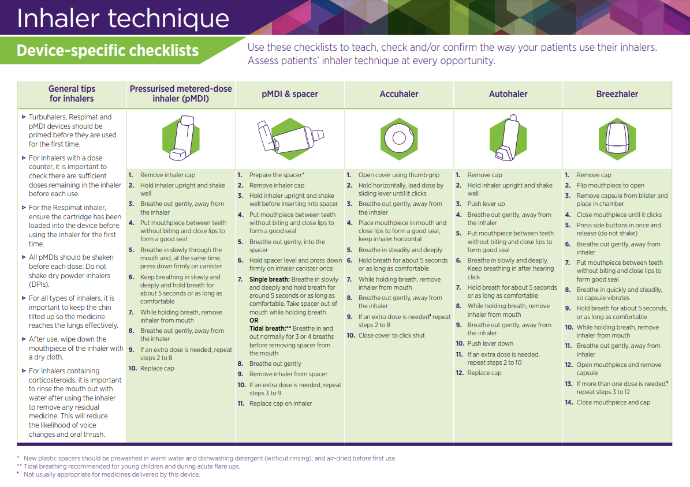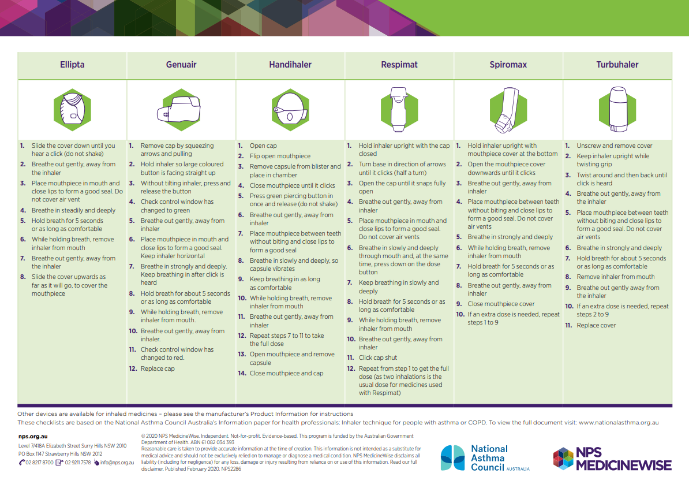
28 Mar Importance of Inhaler Technique
Being diagnosed with a respiratory condition can come as a relief with years of persistent symptoms finally explained. Following diagnosis, an important next step in treating conditions is ongoing management of the condition, often with medication. Many of these medications can now be self-administered through drug delivery devices such as inhalers. These are designed to be easily administered, however if taken wrong it opens up a whole facet of possible errors that can render the medication useless. Self-administration technique is almost as important as the drug itself. Administration dictates where the drug is delivered to and how much of the dose an individual can benefit from.
WHO estimates that only 50% of patients adhere to long to therapy. A 2016 review showed that only 31% of patients used their inhalers correctly, with only 21% of patients reporting that a pharmacist or physician had showed them how to use it.
A spacer is a tool that is attached to an inhaler to provide a buffer between the spray and the individuals mouth. A spacer works as a buffer by preventing the medication dose from ending up on the teeth, tongue, mouth or back of the throat. According to the National Asthma Council of Australia, use of an inhaler without a spacer can cause irritation and mild infections of the mouth.
Tips on using your inhaler & spacer from the National Asthma Council of Australia:
- Fire only one puff into your spacer at a time.
- Breathe in from your spacer as soon as you’ve fired a puff into it – the medication settles on the bottom very quickly.
- For each puff, you can either:
- Take one big breath in – breathe in slowly, deeply and fully and hold breath for about 5 seconds (recommended).
- Breathe in and out normally for 4 breaths (tidal breathing) if you are unable to take one big breath in.
- It is also important to find the right spacer for you – consider size, practicality and effectiveness .
While proper technique improves mouth hygiene, it is also important to wash the plastic casing of your inhaler in warm water as often as necessary, however avoid using soap/detergent/surfactant as this creates a film on your device which will cause the medication to stick to it, effecting your dose.
Here are some more tips from the National Asthma Council of Australia:


Reference list
National Asthma Council Australia website:
Vanoverschelde A, van der Wel P, Putman B, et alDeterminants of poor inhaler technique and poor therapy adherence in obstructive lung diseases: a cross-sectional study in community pharmaciesBMJ Open Respiratory Research 2021;8:e000823. doi: 10.1136/bmjresp-2020-000823

